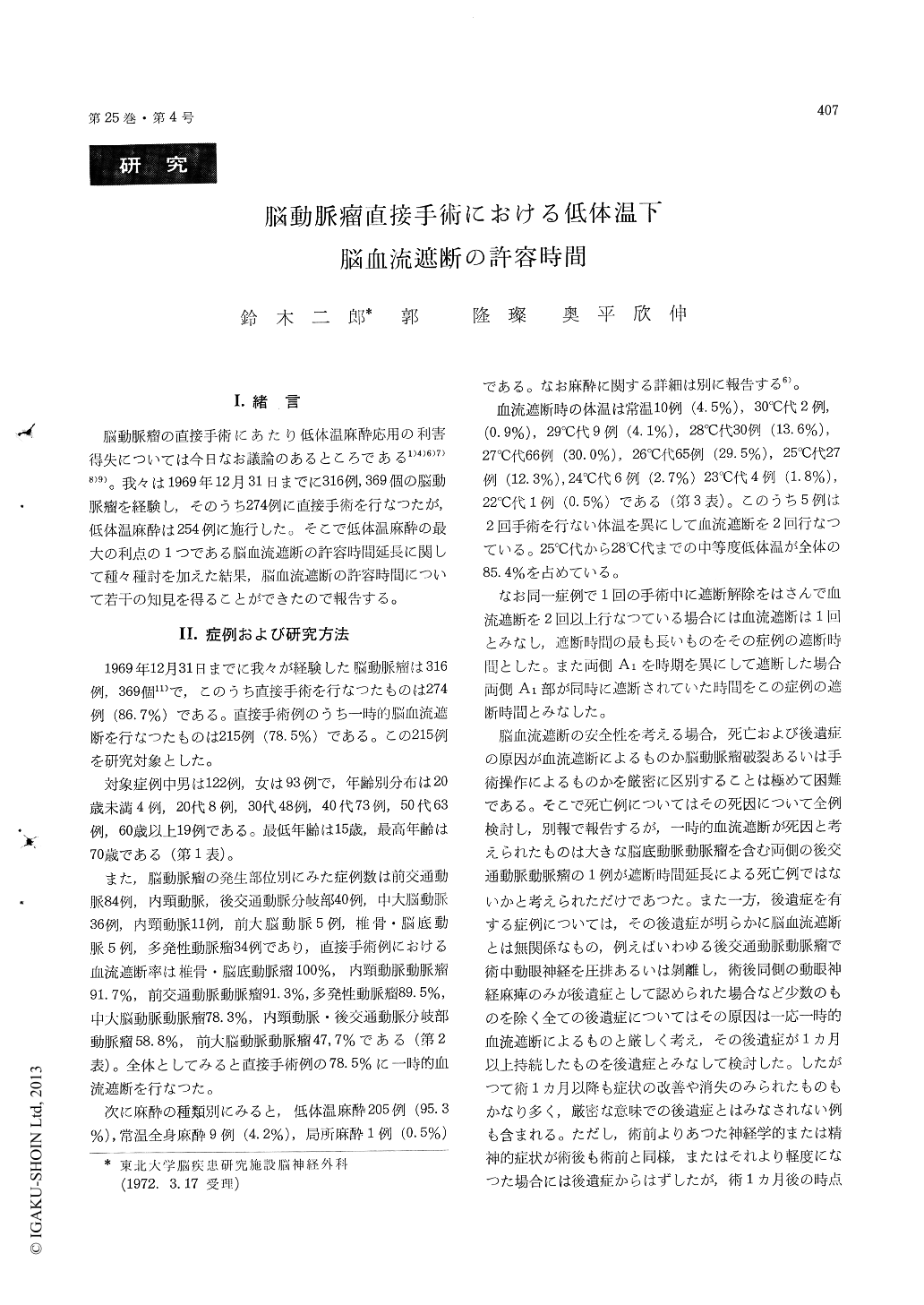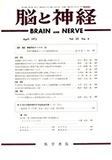Japanese
English
- 有料閲覧
- Abstract 文献概要
- 1ページ目 Look Inside
I.緒言
脳動脈瘤の直接手術にあたり低体温麻酔応用の利害得失については今日なお議論のあるところである1)4)6)7)8)9)。我々は1969年12月31日までに316例,369個の脳動脈瘤を経験し,そのうち274例に直接手術を行なつたが,低体温麻酔は254例に施行した。そこで低体温麻酔の最大の利点の1つである脳血流遮断の許容時間延長に関して種々種討を加えた結果,脳血流遮断の許容時間について若干の知見を得ることができたので報告する。
In our clinic, the direct surgical treatment on intracranial aneurysms was performed in 274 cases out of 316 cases to the end of 1969. Temporary occlusion of the cerebral artery was applyed on 215 cases of them. The safety time limit of tempo-rary clamping was discussed in this experience.
1. The application of temporary clamping on the cerebral artery was performed under moderate hypothermia at 25-29℃ in about 85% of 215 cases.
2. No sequela was noted in 177 cases (82.3%) of 215 cases with temporary occlusion of cerebral artery.
3. The longest safety time in temporary clamp-ing of bilateral Ai portion of the anterior cerebralartery was 48.5 minutes at 26℃, 47min. at 27℃ and 48min. at 28℃, in M1 portion of the middle cerebral artery, 30min. at 26℃, 35min. at 27℃, 36min. at 27.5℃, 40min. at 30℃ and 19min. under normothermia, and on a dominant Al portion of the cases with hypoplasia at contralateral Al portion, 82min. at 26℃, 86min. at 27.5℃ and 63min. at 28℃.
4. Neurological sequelae might be caused by temporary clamping of the cerebral artery in one case, and in 6 case presumably by the hypoxia due to temporary claming as well as brain damage by direct aneurysm operation, and in the other 9 cases presumably by the brain damage due to operation.
5. For effective intermediate release during the temporary clamping 5 to 10 minutes to prolong the safety time limit seemed to be enough.

Copyright © 1973, Igaku-Shoin Ltd. All rights reserved.


